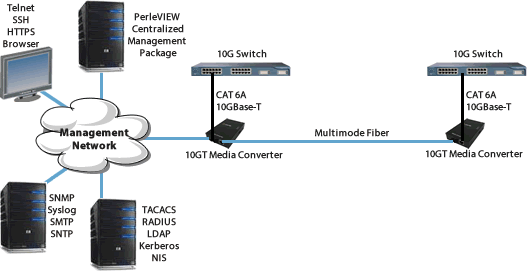- Related articles
- Optical Transceivers for Cisco N5K-C5010P-B-S Switch
- Why Do We Need Optical Fiber to Get to the “Cloud”?
- Optical Transceivers for Cisco WS-C2960+24PC-L Switch
- What is Ethernet PCMCIA card?
- Apply to 1000BASE-LX Standard Optical Transceiver Models
- What is Linux PAM module?
- All Cisco SFP-10GB-LR's information (List price, Specs, Datasheet PDF, Compatibility matri
- What are SFP ports?
- All Cisco DWDM-XFP-56.55's information (List price, Specs, Datasheet PDF, Compatibility ma
- All Cisco CVR-XENPAK-SFP10G's information (Specs, Datasheet PDF, Compatibility matrix)

Introduction:
In this article we will discuss about the 10GBASE-EW Ethernet standard and what is the difference between 10GBASE-EW and 10GBASE-ER, So you can have a basic understanding for 10GBASE-EW technology to understand the basic solutions to 10GBASE-EW.
What is the 10GBASE-EW technology?
10GBASE-EW was designed to interoperate with OC-192/STM-64 SDH/SONET equipment using a light-weight SDH/SONET frame running at 9.953 Gbit/s.10GBASE-EW can drive maximum link distances up to 80 km depending on the fiber standard employed. Its Physical Coding Sublayer 64b/66b PCS is defined in IEEE 802.3 Clause 49 and its Physical Medium Dependent PMDs in Clauses 52. It also uses a WAN Interface Sublayer (WIS) defined in Clause 50 which adds extra encapsulation to format the frame data to be compatible with SONET STS-192c.

What is the Difference Between 10GBASE-EW and 10GBASE-ER?
10GBASE-EW Supports 64B/66B signal encoding type and it is compatible with transmissions over OC-192 SONET based optical fiber system.
10GBASE-ER ("extended reach") is a port type for single-mode fiber and uses 1550 nm lasers. Its Physical Coding Sublayer 64b/66b PCS is defined in IEEE 802.3 Clause 49 and its Physical Medium Dependent PMD in Clause 52. It delivers serialized data at a line rate of 10.3125 Gbit/s.





















































